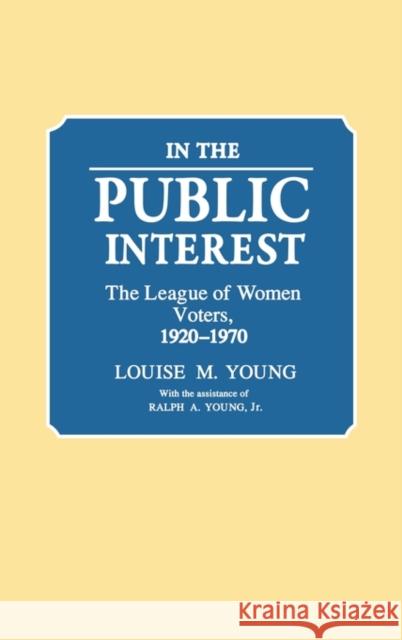In the Public Interest: The League of Women Voters, 1920-1970 » książka
In the Public Interest: The League of Women Voters, 1920-1970
ISBN-13: 9780313253027 / Angielski / Twarda / 1989 / 212 str.
This detailed, scholarly work describes the interaction of the League of Women Voters from its inception in 1920 up to and through the Nixon administration. The book consists of a dense, narrative history, focusing primarily on the actions of the league's leadership. The efforts of the league to remain nonpartisan constitute an important recurring theme, as does the league's informal specialization' in the field of foreign affairs. Particularly impressive are the descriptions of the league's tactical adaptations to a changing political environment. The authors have provided an invaluable analysis or evaluation, but the accounts of events make this an important historical reference. "Library Journal"
When the Nineteenth Amendment became law on August 26, 1920, women as newly enfranchised voters entered an era of political rights and responsibilities for which, as a subordinate class, they were unprepared. In the Public Interest, the first book about the League of Women Voters, details the vital role played by the League as a force in shaping the political participation of American women from 1920 to 1970. From its beginnings, the League, a major surviving offspring of the women's suffrage movement, exemplified the nonpartisanship, political skills, lobbying methods, and grass-roots organizational capabilities previously employed in winning the vote for women. During its early years, the League devised the strategies for capturing the energies and ideals of the suffrage movement and directing them to broadly defined goals of social reform and good government. To achieve these ends, the League learned to work through political institutions at all levels: local and state governments, the three branches of Federal government, and both political parties. Young shows how the League implemented these strategies and, in the process, developed methods of political education and provided political experience that strengthened American democracy by contributing to the growth of thousands of citizens.
The volume highlights some of the needed legislation advanced by the League during the fifty-year period covered, including the Sheppard-Towner Act for the public protection of maternity and infancy in the '20s; the fight for the TVA; the extension of the Civil Service merit system in the the '30s; and efforts in areas of individual liberties during the McCarthy era, civil rights, and international relations. Also addressed are the League's efforts to free women from discrimination and its differences with the Woman's Party on protective legislation and the Equal Rights Amendment. Based on the historical collection of League documents in the Library of Congress, which Young cataloged, this groundbreaking study will be especially interesting to students and scholars in Women's Studies and feminists as well as readers interested in theories of organization, political participation, and characteristics of small groups and leadership.











